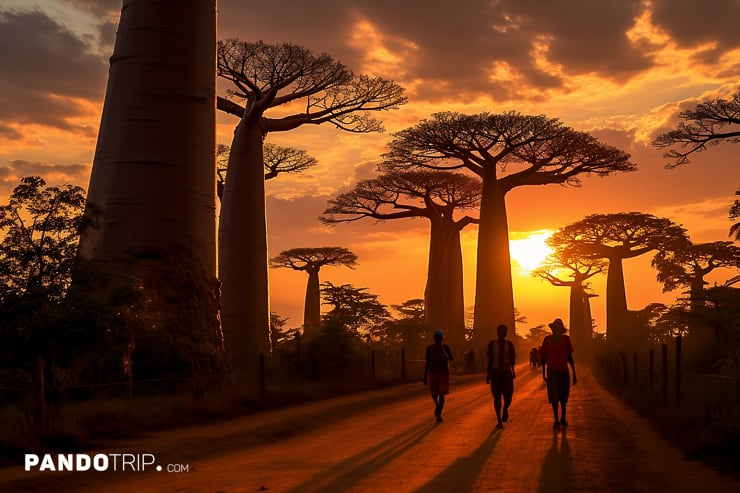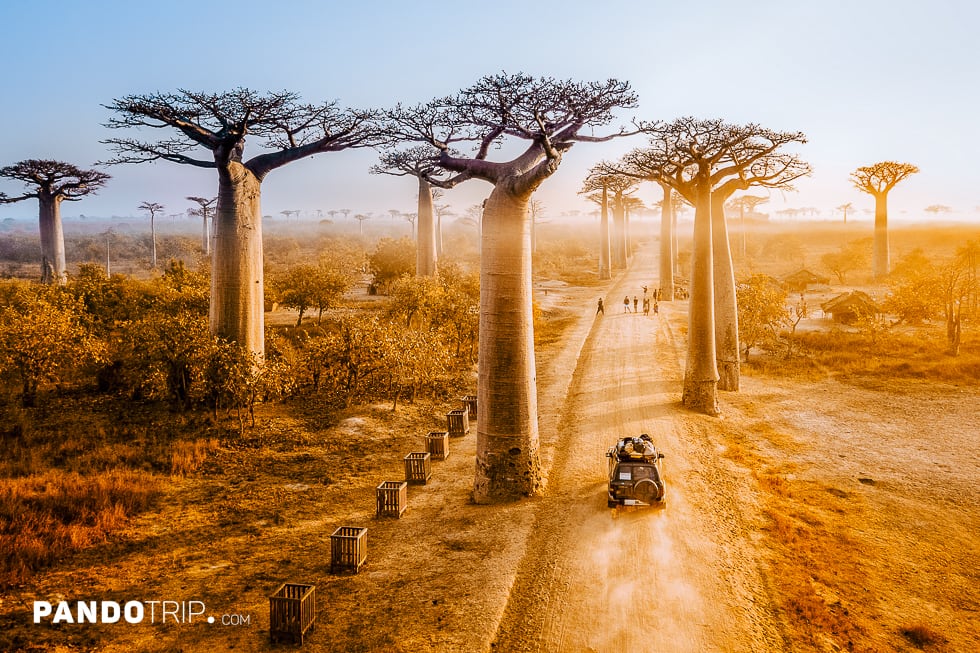Africa is a vast continent brimming with spectacular natural scenery. From soaring mountains to expansive deserts, thundering waterfalls to lush rainforests, the landscapes of Africa showcase the continent’s diverse environments and ecosystems. Africa contains some of the world’s most iconic and celebrated natural wonders that showcase the power, beauty and splendor of the natural world.
This article highlights ten of the most breathtaking and magnificent natural wonders found across the continent of Africa. These were selected based on criteria such as exceptional beauty, ecological significance, cultural importance, popularity with tourists, and representing Africa’s diverse geography and wildlife. The natural wonders on this list range from southern Africa’s Table Mountain, to East Africa’s Serengeti Plains, to the Nile River flowing through northeastern Africa. They exemplify the diversity of landscapes and ecosystems found across Africa.
We invite you to explore these ten African natural wonders through this article. Read on to learn about their unique features, the incredible plants and wildlife they support, and how to experience them yourself.
1. Victoria Falls, Zambia/Zimbabwe
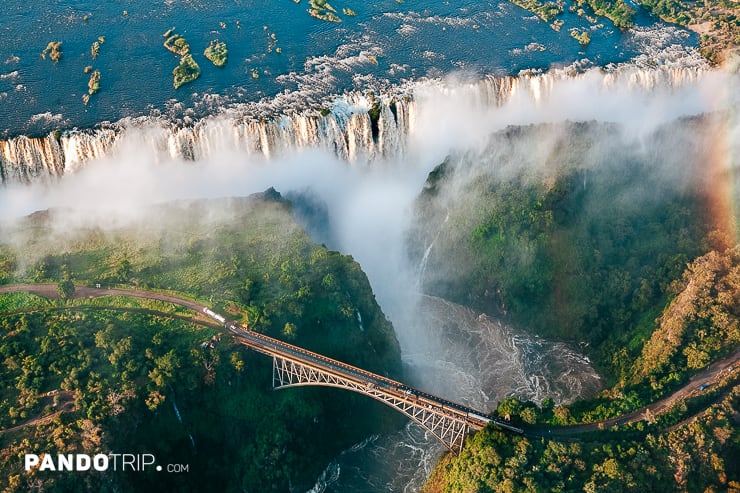
Considered one of the greatest waterfalls in the world, Victoria Falls located on the mighty Zambezi River between Zambia and Zimbabwe is a breathtaking natural wonder of Africa. Often called Mosi-oa-Tunya, or “The Smoke that Thunders”, this iconic waterfall system plunges over 100 meters (328 feet) into the Batoka Gorge below.
The falls are created where the full width of the powerful Zambezi River abruptly cascades into a narrow, basalt gorge. This sudden transition creates a stunning 1.7 kilometer (1 mile) wide sheet of water, thundering down in epic size and strength. Victoria Falls dumps over 500 million liters (132 million gallons) per minute into the gorge during flooded seasons. In its epic size and power, Victoria Falls can only be compared to Niagara Falls in North America.
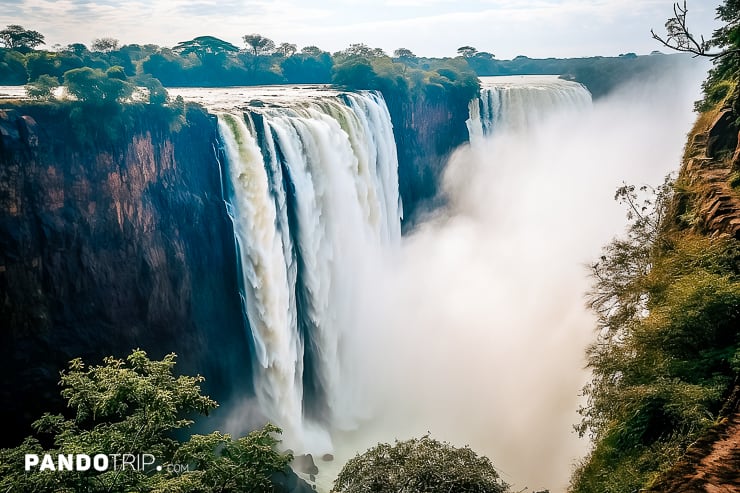
Victoria Falls is renowned for its awe-inspiring beauty, and the towering columns of spray that rise over the falls. This mist emerges from the violent collision between water and rock and can reach over 400 meters (1,312 feet) high and are visible from up to 50 kilometers (31 miles) away. The falls’ unique “smoke” inspired the name Mosi-oa-Tunya given by local Matabele people.
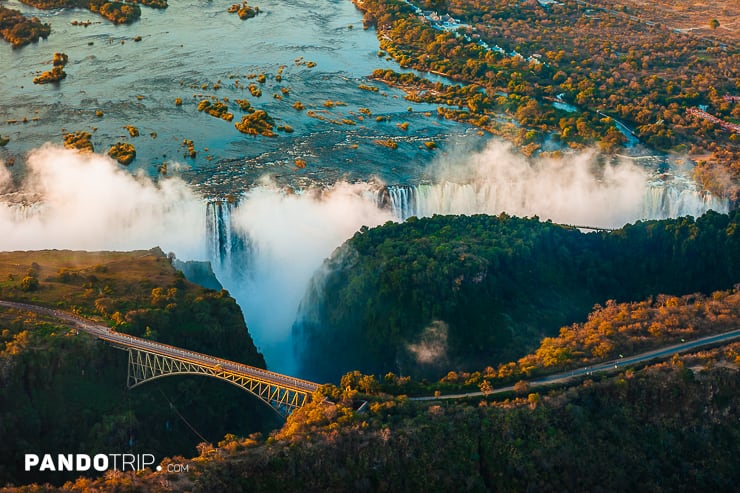
The ecosystems surrounding Victoria Falls are as spectacular as the falls themselves. Unique rainforest, savanna, and woodlands have formed in the spray zones of the falls, creating habitats for exotic birds, insects, and animals. Exploring trails weave through these diverse environments. However, while exceptionally beautiful, Victoria Falls faces environmental threats from tourism, upstream hydropower projects and extreme swings in rainfall the region.
2. Mount Kilimanjaro, Tanzania
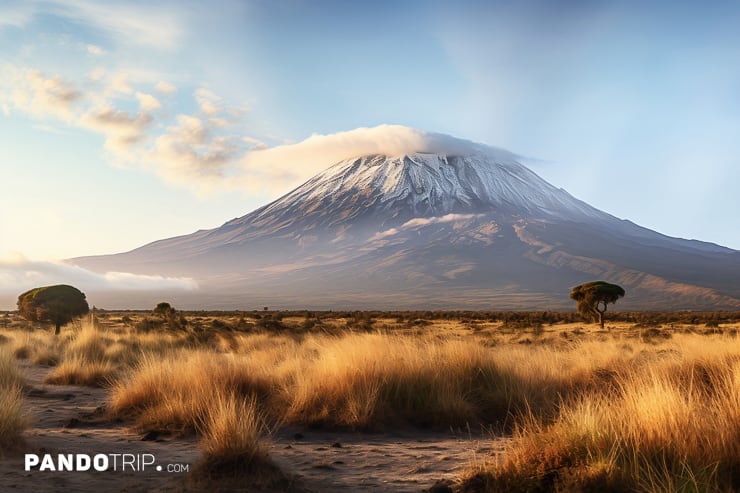
Rising majestically from the plains of Tanzania near the Kenyan border, Mount Kilimanjaro is Africa’s tallest peak and one of the continent’s most magnificent natural sights. This massive stratovolcano tops out at 5,895 meters (19,341 feet), making it the highest freestanding mountain in the world, meaning it is not part of a mountain range.
Kilimanjaro is actually comprised of three distinct volcanic cones – Kibo, Mawenzi, and Shira. Uhuru Peak is the highest summit on Kibo’s crater rim and is the ultimate goal for those wishing to reach the highest point in Africa.
While extremely tall, Kilimanjaro is relatively accessible to climb. Over 25,000 hikers attempt to reach the summit each year along six main routes. The popular Marangu Route is considered one of the easier climbing routes on the mountain. With proper acclimatization, even inexperienced climbers can complete the 5-7 day hike and ascend Uhuru Peak.
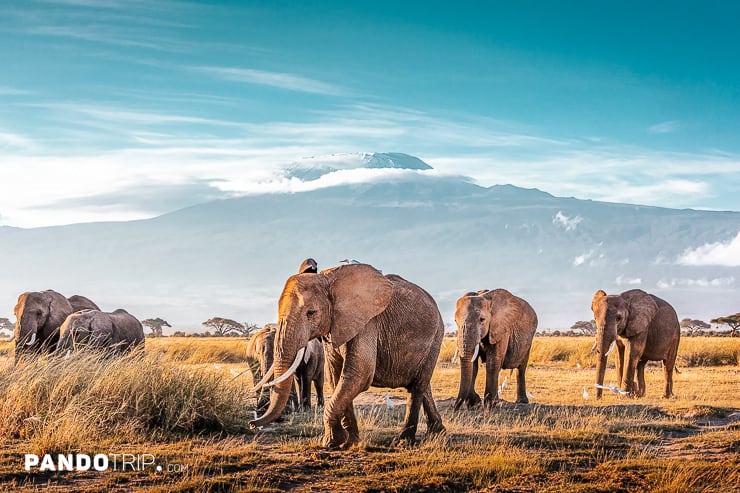
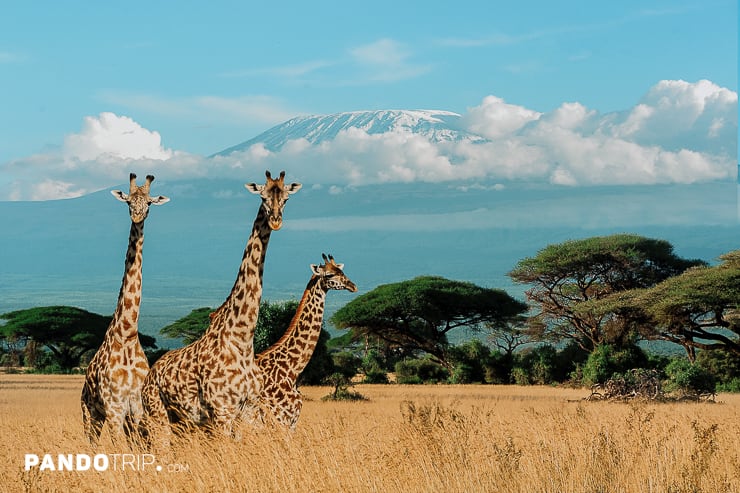
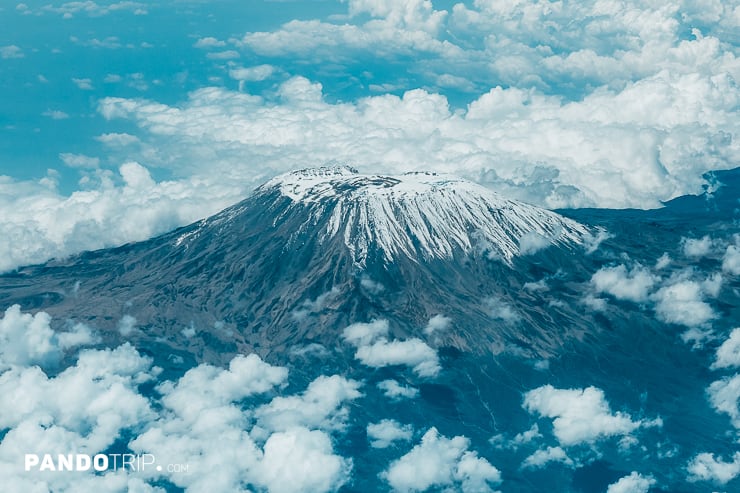
Unfortunately, Kilimanjaro’s iconic snows and glaciers have receded dramatically in recent decades. Around 85% of the ice cover has disappeared since 1912, with the loss attributed to rising global temperatures. The effects of climate change threaten both local ecosystems and water supplies.
Despite the vanishing ice fields, Kilimanjaro remains a jewel of the African landscape. Wildlife still roams its diverse climate zones and habitats, from rainforests to alpine meadows. Hardy elephants, leopards, buffalo, antelope and much more reside on and near the mountain.
3. Sahara Desert
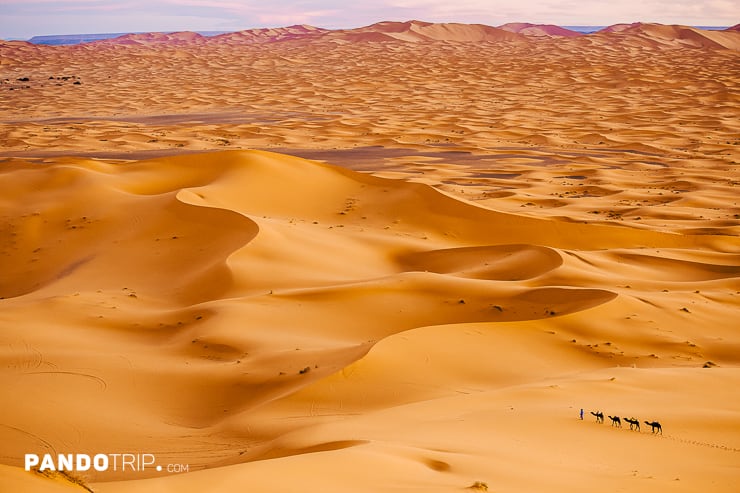
The Sahara is the world’s largest hot desert and the third largest desert overall, surpassed only by the cold deserts of Antarctica and the Arctic. It spans an expansive area of over 9 million square kilometers (approximately 3,500,000 square miles), roughly equivalent to the size of the United States or China. The Sahara extends across 11 North African countries and covers more than 30% of the African continent.
Recognized as one of the world’s hottest deserts and one of the most extreme environments on Earth, the Sahara has an average annual temperature of about 30°C (86°F), with some areas experiencing extremes of above 50°C (122°F). The region is characterized by low rainfall, with half of the Sahara receiving less than one inch (2.5 cm) of rain annually.
The Sahara is perhaps best known for its vast fields of sand dunes, often depicted in movies. These dunes can reach heights of nearly 180 meters (600 feet). However, the Sahara is far from a monotonous, featureless sea of sand; it showcases an incredibly diverse landscape. Sand dunes comprise only about 25% of the entire desert. The Sahara’s other topographical features include mountains, plateaus, sand- and gravel-covered plains, salt flats, basins, and depressions.
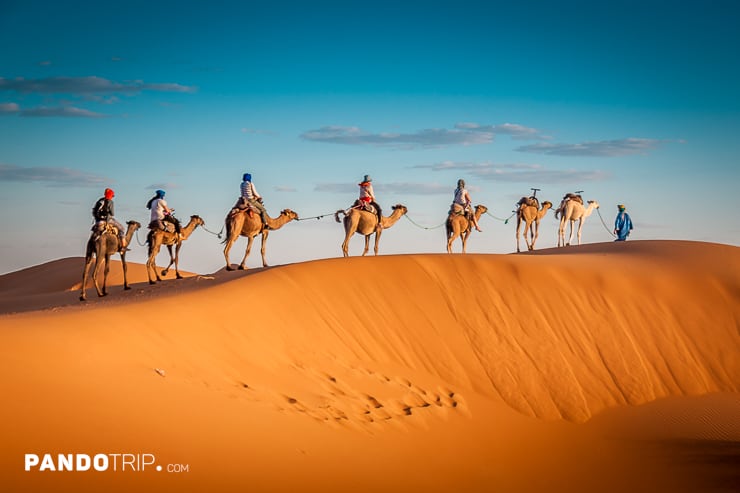
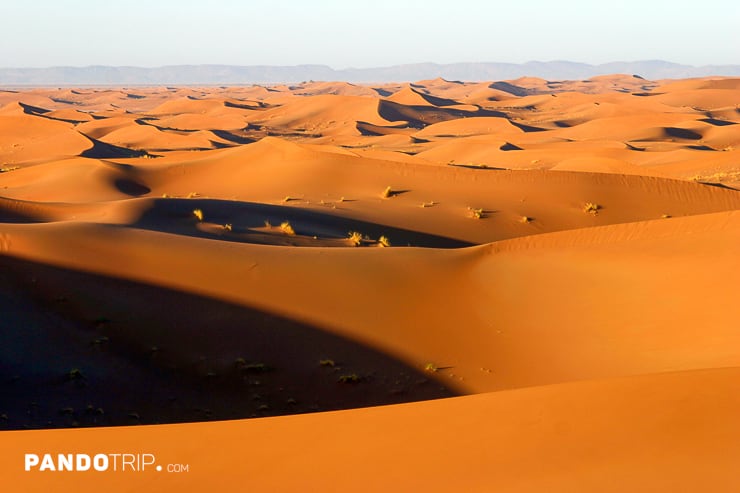
Contrary to what one might anticipate, the Sahara also hosts a range of wildlife adapted to endure such a harsh environment. The camel is one of the Sahara’s most iconic animals. Also known as the “ships of the desert,” these creatures are well-suited to the Sahara’s hot, arid conditions. The humps on a camel’s back store fat, which can be converted into energy and hydration between meals. Camels can store energy so efficiently that they can survive more than a week without water and several months without food.
One of the Sahara’s most captivating and intriguing phenomena is its sandstorms, also known as ‘haboobs.’ These intense storms can drastically reshape the landscape within hours and produce a mesmerizing spectacle.
4. Fish River Canyon, Namibia
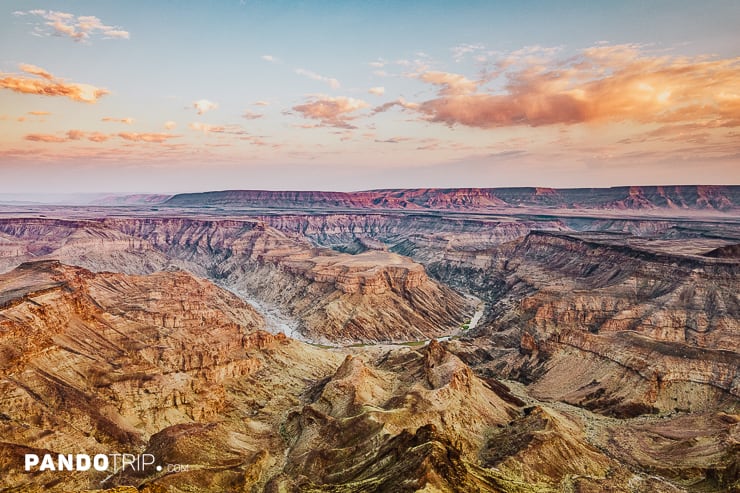
The Fish River Canyon, the largest canyon in Africa and the second largest in the world after the Grand Canyon in the USA, is a significant geological feature in southern Namibia. This enormous gorge is approximately 160 km (99 miles) long, 27 km (17 miles) wide and reaches depths of up to 550m (1,804 feet). The canyon is the result of a variety of geological processes including plate tectonics, glaciation, continental drift and river erosion over millions of years. It is considered one of the oldest geological structures on Earth.
The canyon derives its name from the Fish River, the longest interior river in Namibia. This river typically flows in late summer during the rainy season and transforms into a series of elongated narrow pools during the dry winter months. At the southern end of the canyon is the hot springs resort of Ai-Ais, which means “burning water” in one of the local languages.
The Fish River Canyon is rich in biodiversity, supporting a wide variety of plant and animal species. The area is inhabited by several species of antelope, zebra, wild horse and smaller fauna such as rock hyrax. The canyon is a haven for bird watchers with over 60 species documented in the region. The plant life is equally diverse, with species such as quiver trees, aloes, and various desert shrubs.
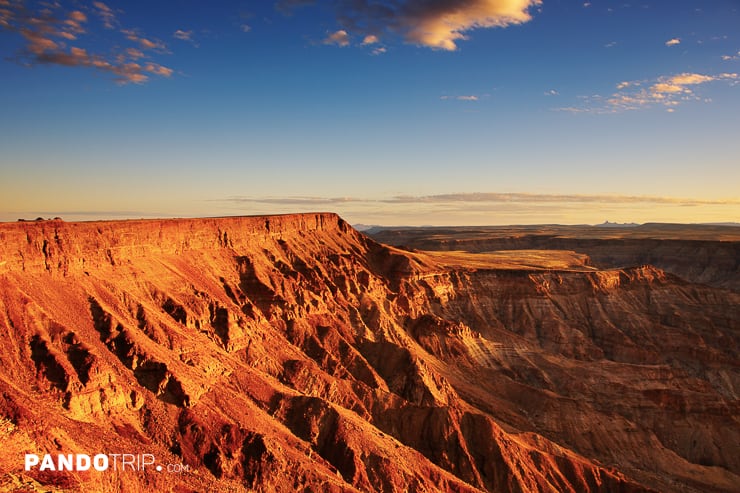
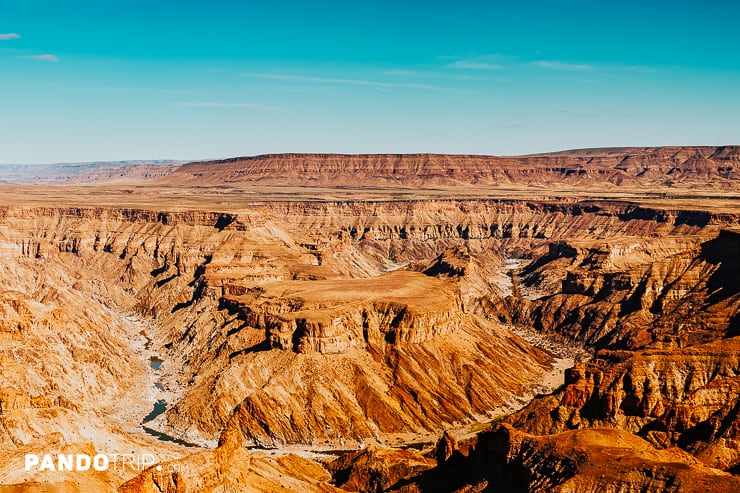
Hiking is one of the most popular activities in the Fish River Canyon. The Canyon Trek, one of the most best trails in southern Africa, is approximately 85 kilometers (53 miles) long and usually takes 4-5 days to complete. Due to the demanding nature of the trail and the extreme temperature fluctuations, it is only accessible from May to mid-September. Despite the challenges, the trail offers a rewarding experience and provides hikers with an intimate experience of the canyon’s unique wildlife and flora.
5. Serengeti National Park, Tanzania
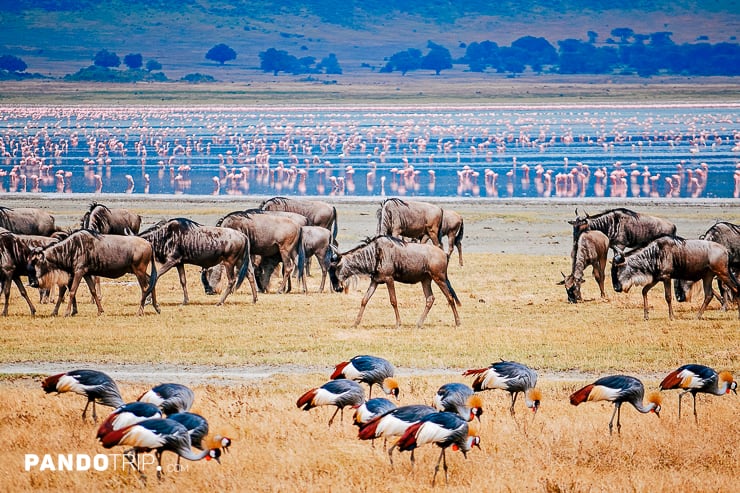
Sprawling across the Tanzanian landscape, Serengeti National Park is one of Africa’s most famous and biodiverse national parks. Known for its extensive grassy plains, acacia forests and immense wildlife populations, the Serengeti ecosystem plays host to one of nature’s greatest spectacles – the Great Migration.
Every year over 1.5 million wildebeest, along with hundreds of thousands of zebra and gazelle, undertake the circular migration across the Serengeti in search of lush grasslands. This annual phenomenon follows the seasonal rains and is tracked by mighty predators like lions, cheetahs and hyenas. The migration passes through the Serengeti’s diverse habitats including the endless Seronera Plains in the park’s central corridor.
Aside from the Great Migration, the Serengeti has incredible biodiversity with over 70 large mammal and 500 bird species. Visitors can spot the Big Five – elephants, rhinos, buffalo, lions and leopards – plus giraffes, hippos and more iconic African wildlife. The landscape ranges from acacia woodlands to granite outcrops like the famous Kopjes formations.
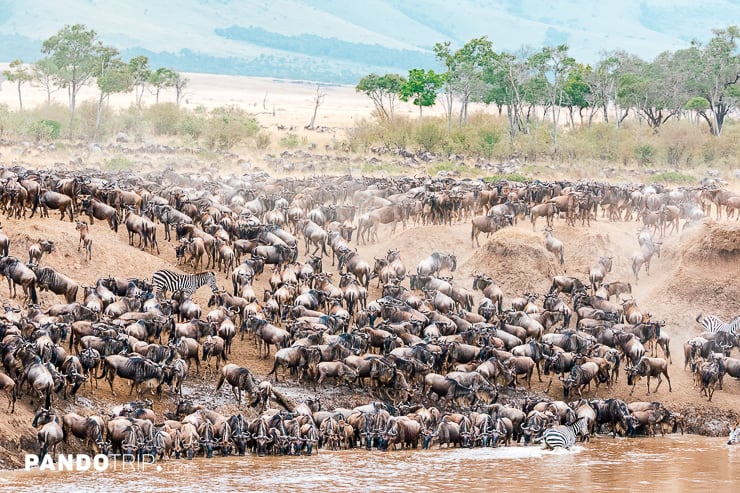
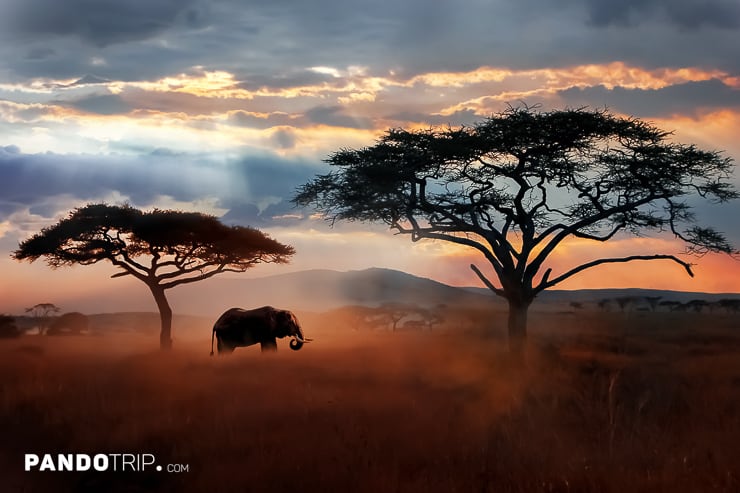
Serengeti National Park offers visitors a variety of ways to experience its wonders. Activities include game drives, night drives, hot air balloon safaris and walking safaris to witness the epic wildlife. Most tourists stay in the southern Seronera Valley, central Serengeti Plains or northern Lobo area.
6. Nile River
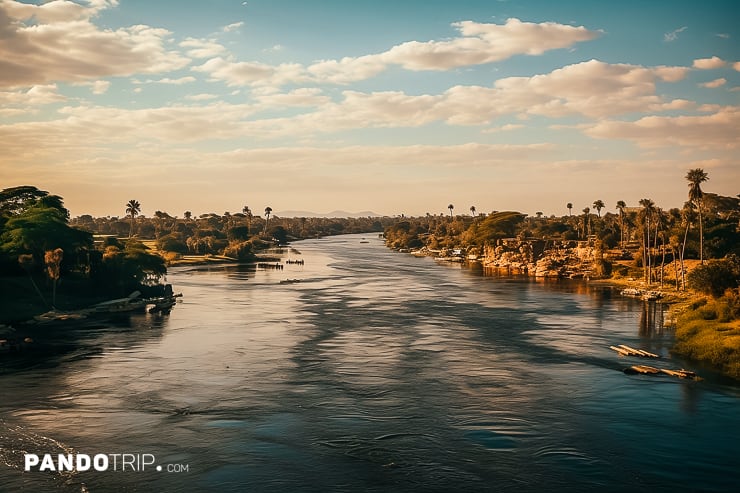
The Nile, with a length of over 6,650 kilometers (approximately 4,130 miles), is the longest and one of the most beautiful rivers in the world. It courses through eleven countries before emptying into the Mediterranean Sea. The river serves as the primary water source for many of these nations and holds immense historical, cultural, and economic significance.
The river is often associated with Egypt, where it has played a pivotal role since ancient times. The Nile’s annual floods brought fertile silt and water to the arid lands, enabling civilizations to flourish in an otherwise inhospitable region. Remarkably, even today, about 95 percent of Egyptians live within a few kilometers of the Nile.
Major cities along the Nile, including Cairo, Aswan, and Luxor in Egypt, are home to internationally acclaimed archaeological sites such as the Pyramids of Giza and the Valley of the Kings. A river cruise along the Nile, incorporating visits to these ancient sites, is one of the most popular ways to experience this natural wonder.
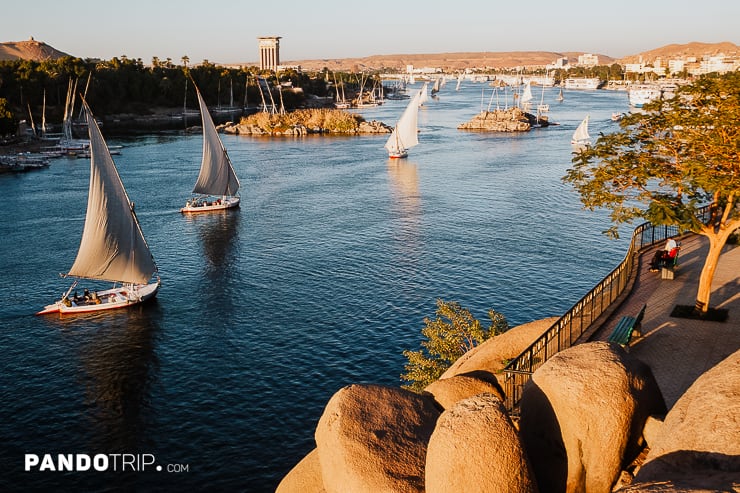
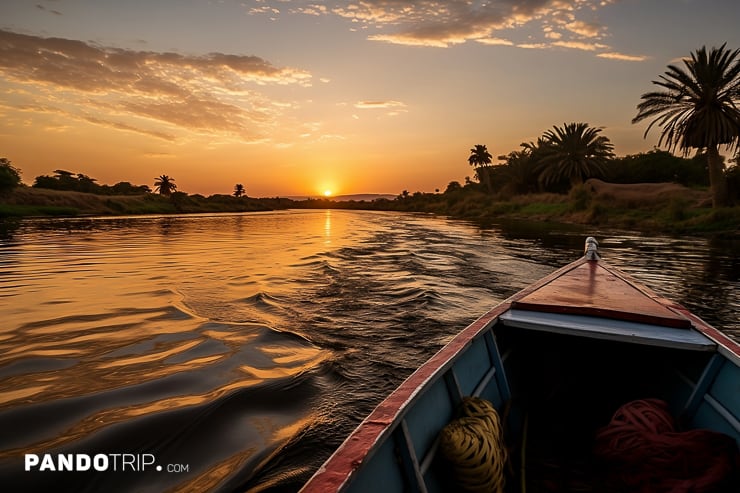
In addition to its historical and cultural importance, the Nile supports a diverse array of flora and fauna, including several species unique to the region. The river sustains a variety of ecosystems, ranging from wetlands and swamps to forests and savannas. It serves as a habitat for numerous species of fish, birds, reptiles, and mammals, including the Nile crocodile, hippopotamus, and various species of primates.
7. Table Mountain, South Africa
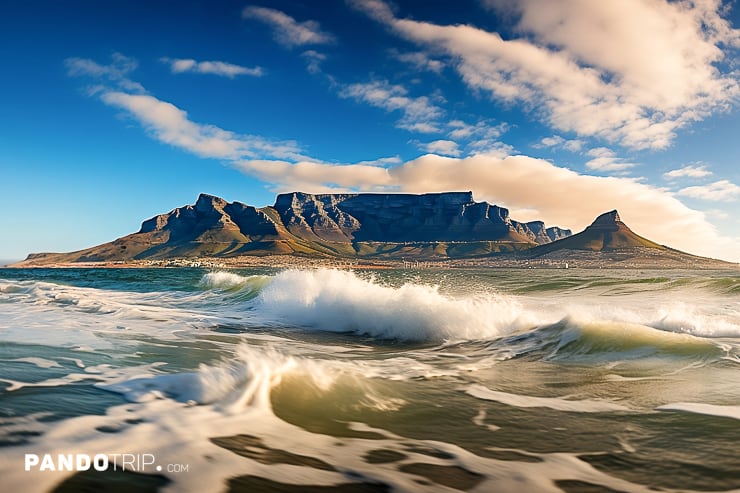
Towering over the picturesque beach city of Cape Town, South Africa is the iconic flat-topped Table Mountain. This world-famous landmark forms the northern end of the Cape Peninsula and provides simply breathtaking views across this oceanside city and coastline.
The main feature of Table Mountain is its 3km (1.9 mile) wide, flat-topped plateau made up of thick, horizontally layered beds of sandstone. This plateau is surrounded by sheer cliffs that fall over 1,000 meters (3,280 feet) to the base, with Devil’s Peak and Lion’s Head providing picturesque side peaks. At 1,085 meters (3,562 feet) tall, Table Mountain dominates the landscape and is visible across Cape Town.
One of Table Mountain’s most notable natural phenomena is the tablecloth of clouds that pours over the plateau on windy days. This ephemeral white blanket is caused by moisture-laden South Easterly winds hitting the mountain and creating condensation. The tablecloth can disappear as fast as it arrives.
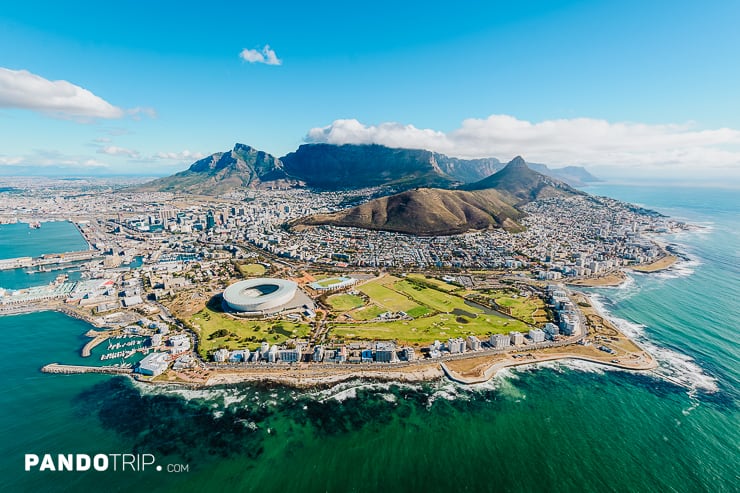
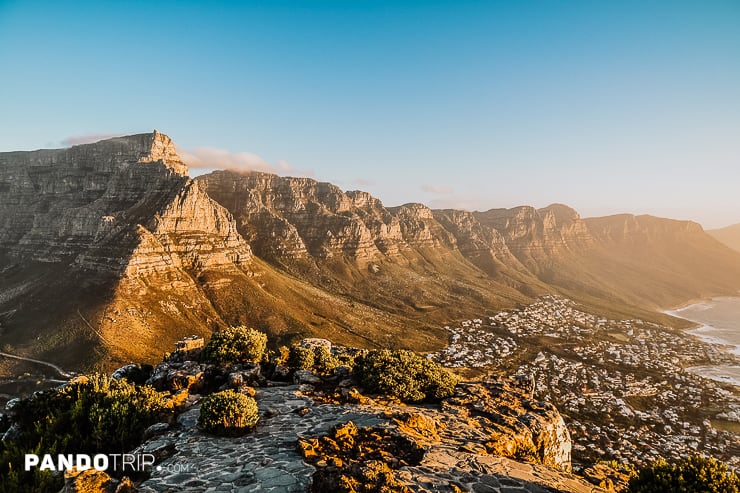
Table Mountain National Park contains incredibly biodiverse fynbos flora and small wildlife like hyraxes, tortoises and porcupines adapted to the rocky slopes. There are over 350 hiking trails criss-crossing the mountain, providing spectacular views. Lion’s Head in particular offers some of the world’s best ocean vistas across Cape Town’s stunning beaches. The easiest way to ascend is via the 5-minute Table Mountain Aerial Cableway.
8. Okavango Delta, Botswana
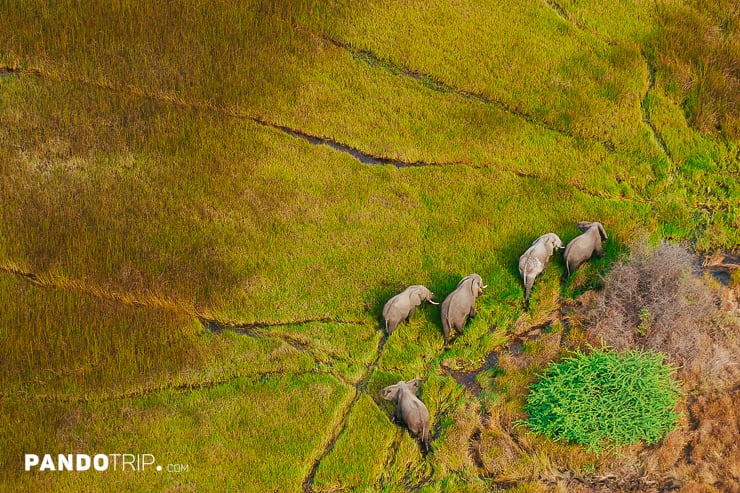
Deep in the Kalahari Desert of northern Botswana lies the Okavango Delta, a lush water world in the midst of arid southern Africa. This unique wetland ecosystem spreads over 15,000 sq km (5,791 sq miles), creating the largest inland delta in the world.
The Okavango Delta is created as the Okavango River fans out upon reaching the sands of the Kalahari, creating a maze of reed-lined waterways and verdant islands. The river is one of the few rivers in the world that do not flow into a sea or ocean, and one of the largest endorheic deltas in the world. Instead of emptying into an ocean or sea, the river drains onto open land. The delta transforms seasonally, flooding in winter then drying in summer, supporting a diversity of habitats. This range of ecosystems supports an incredible array of wildlife, from elephants, hippos and big cats to varied birdlife.
The best way to experience the tranquil beauty of the Okavango is by traditional mokoro canoe. Gliding silently through the papyrus, visitors can get amazingly close to the prolific wildlife. Other activities include vehicle safaris, bushwalks, helicopter trips and camping under the delta’s starry night skies.
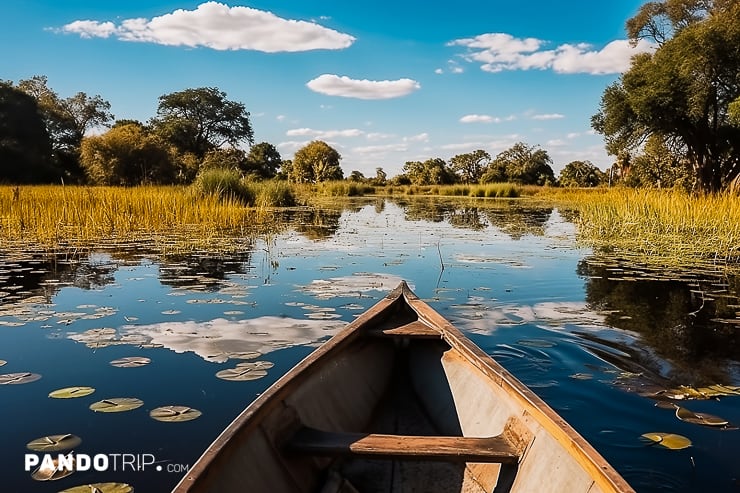
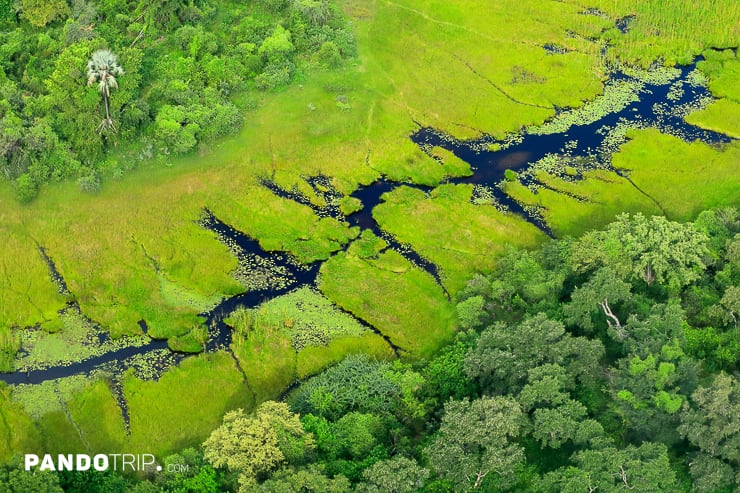
Named a UNESCO World Heritage Site in 2014, the scenic Okavango Delta represents one of Africa’s most spectacular and important wetland wildernesses. However, the Okavango’s unique flood-based ecology is under threat from climate change and upstream water extraction. This fragile ecosystem relies on regular seasonal floods from faraway highland rivers. Protecting the delta’s catchments and minimizing human impact is crucial.
9. Underwater Waterfall, Mauritius
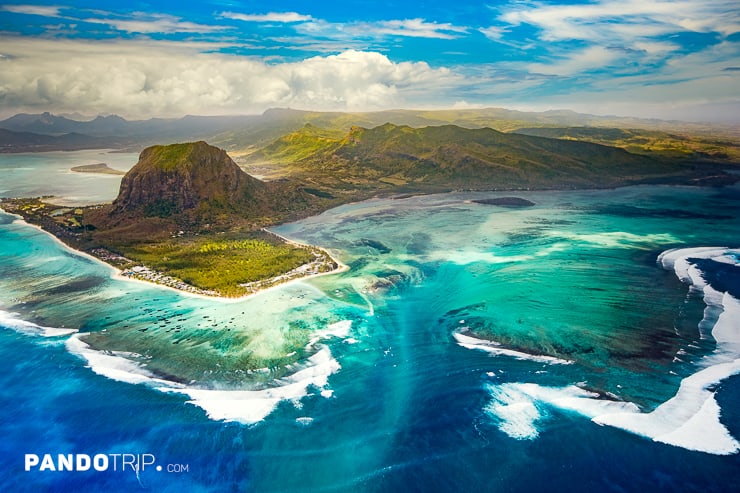
One of the most visually stunning natural phenomena in Africa is the mesmerizing Underwater Waterfall located in the Indian Ocean. This incredible illusion occurs around the southwestern tip of Mauritius near the Le Morne Brabant mountain.
From aerial views, the ocean bottom topography creates the impression of a deep underwater waterfall, with sand and silt appearing to cascade down a sharp vertical drop-off. In reality, the underwater landscape is characterized by currents flowing over the continental shelf in different directions, creating this cascading effect.
The oceanic illusion is accentuated by the varying shades of blue formed by changes in ocean depth and sand banks. These elements come together to form a dramatic spectacle, especially prominent when viewed from above. While you can catch glimpses of this phenomenon from the beach or high points on Le Morne Brabant, the most dramatic views are from helicopter. Several helicopter tours are available, giving visitors the opportunity to witness the captivating sight from the sky.
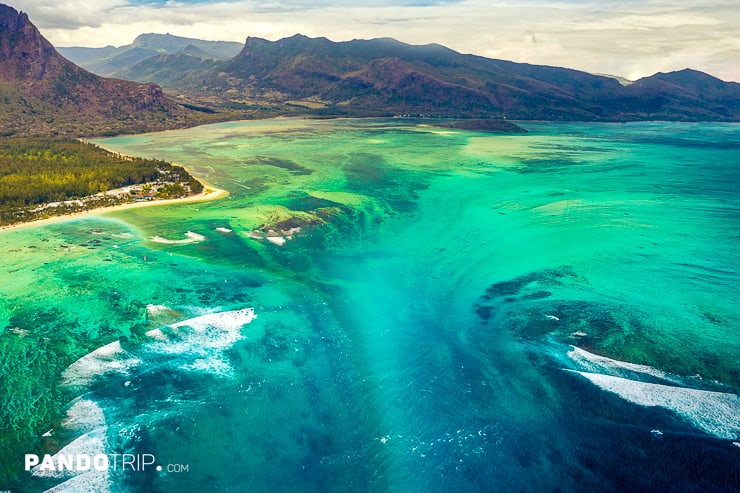
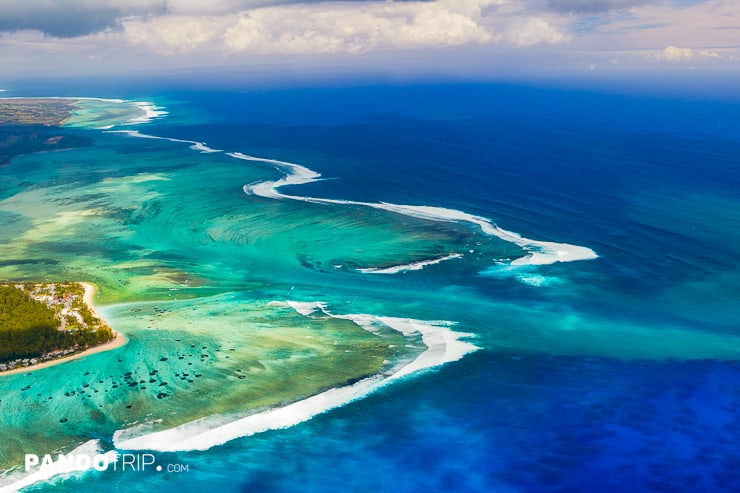
Though not a true geological waterfall, this natural marine phenomenon is just as impressive due to its aesthetic splendor and the way light plays through the water. Considered one of the most beautiful wonders of the underwater world, Mauritius’ Underwater Waterfall exemplifies the natural beauty and wonder contained within our oceans.
10. Avenue of the Baobabs, Madagascar
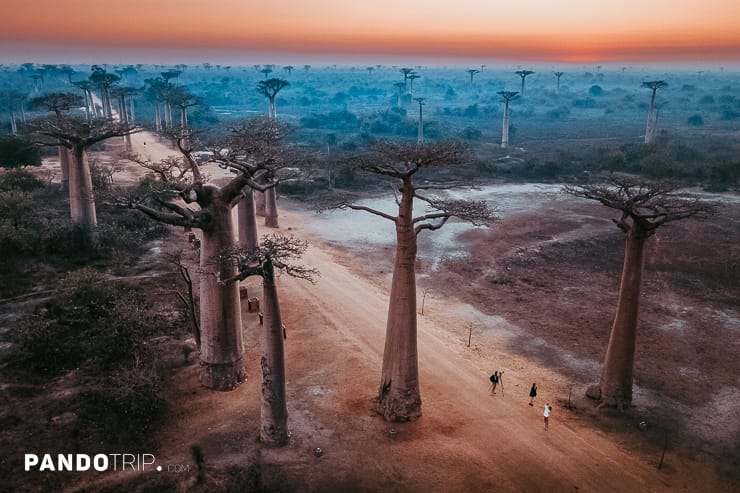
The Avenue of the Baobabs, a dirt road cutting through a cluster of baobab trees in the Menabe region of western Madagascar. It is one of the world’s most picturesque routes and the most accessible location to view Baobab trees in Africa.
The Avenue of the Baobabs has approximately 20-25 mature trees, each soaring up to 30 meters (98 feet) in height, along a 260-meter (853 foot) stretch of the road. This avenue boasts around 20-25 mature trees, reaching heights of up to 30 meters, lining a 260-meter stretch of the road. These trees are endemic to Madagascar, and are among the oldest living organisms on Earth, with some estimated to be as old as 2,800 years. They are known locally as “renala”, a Malagasy term meaning “mother of the forest”.
This impressive landscape is one of the most visited places in the country. The area is especially picturesque at sunrise or sunset, when the striking silhouettes of the baobabs contrast against the vibrant sky. This dramatic interplay of light and shadow has made the avenue a magnet for photographers, rendering it one of the most photographed locations in Madagascar.
In recognition of its ecological significance, the Avenue of the Baobabs has been at the heart of local conservation efforts. In July 2007, the Ministry of Environment, Water and Forests granted it temporary protected status, marking the initial step toward designating it as Madagascar’s first natural monument.
